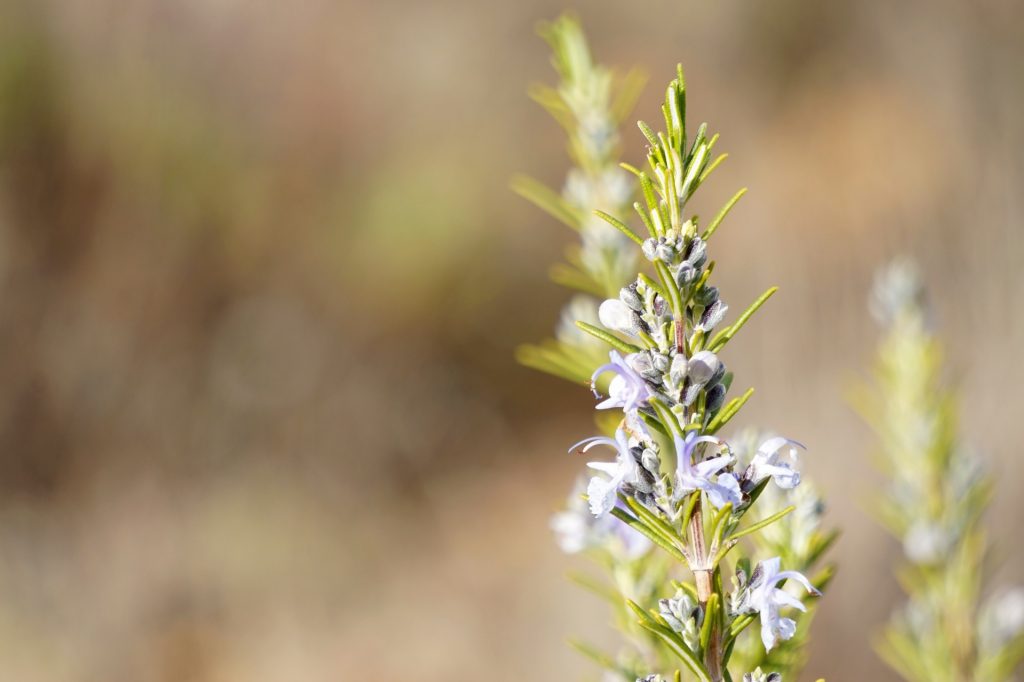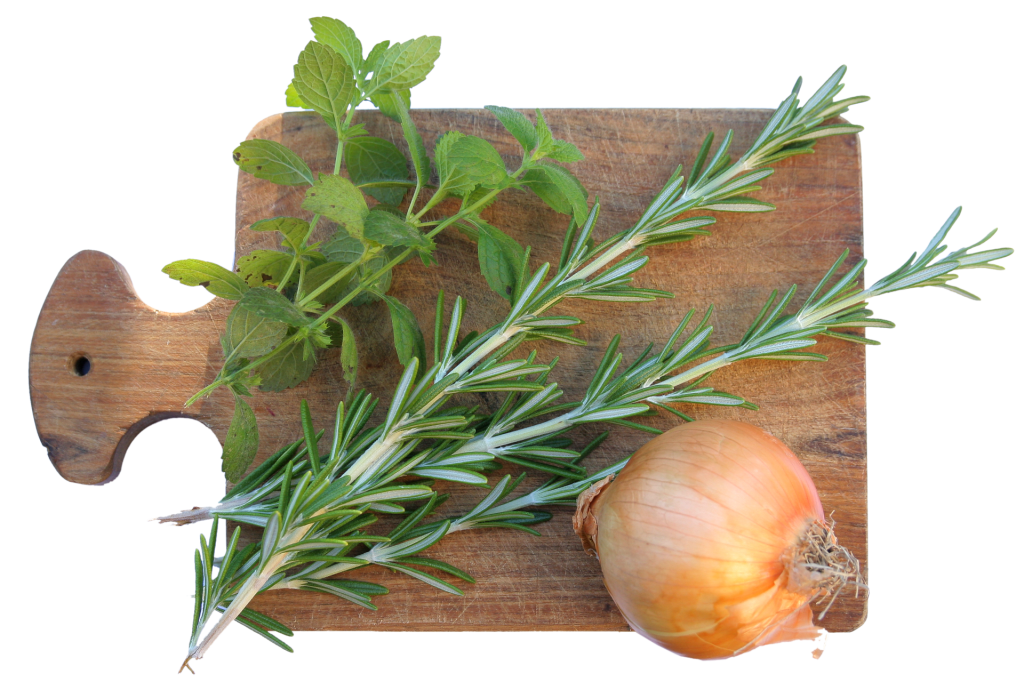 Borage (Echium amoenum) may be a useful treatment for anxiety. Research suggests that the effectiveness of borage against anxiety may relate to the rosmarinic acid content of the plant. A number of other plants from the Boraginaceae (forget-me-not) family may share this effect with borage due to the rosmarinic acid content of the family. Rosmarinic acid was first isolated from the rosemary plant (Rosmarinus officinalis), a herb that belongs to the Lamiaceae (mint) family. Research has shown that a large number of this family of plants also contain rosmarinic acid including Salvia officinalis (culinary sage), Melissa officinalis (lemon balm), Origanum vulgare (oregano), Lavandula angustifolia (lavender), Mentha aquatica (water mint), Mentha spicata (spearmint). Most of the plants belonging to this family appear to contain rosmarinic acid, but it is particularly concentrated in the Mentha species or mint plants. The presence of rosmarinic acid may explain the use of Lamiaceae plants as anxiolytic and antidepressant herbs.
Borage (Echium amoenum) may be a useful treatment for anxiety. Research suggests that the effectiveness of borage against anxiety may relate to the rosmarinic acid content of the plant. A number of other plants from the Boraginaceae (forget-me-not) family may share this effect with borage due to the rosmarinic acid content of the family. Rosmarinic acid was first isolated from the rosemary plant (Rosmarinus officinalis), a herb that belongs to the Lamiaceae (mint) family. Research has shown that a large number of this family of plants also contain rosmarinic acid including Salvia officinalis (culinary sage), Melissa officinalis (lemon balm), Origanum vulgare (oregano), Lavandula angustifolia (lavender), Mentha aquatica (water mint), Mentha spicata (spearmint). Most of the plants belonging to this family appear to contain rosmarinic acid, but it is particularly concentrated in the Mentha species or mint plants. The presence of rosmarinic acid may explain the use of Lamiaceae plants as anxiolytic and antidepressant herbs.

Rosmarinic acid is a phenolic compound which is an ester of caffeic acid (a hydroxycinnamate found in many foods including coffee) and 3,4-dihydroxyphenyl lactic acid. The structure of rosmarinic acid is of interest because 3,4-dihydroxyphenyl lactic acid (also called danshensu) may have antioxidant and anxiolytic effects in animals. For example, in one study researchers isolated danshensu from the Prunella Vulgaris plant (also called common self-heal, heart all, woundwort or heart-of-the-earth). They then administered the compound to mice. The results of the study showed that danshensu exhibited significant anxiolytic effects in mice, but no sedative effects were noted. In addition, the same researchers showed that danshensu was effective at inhibiting the monoamine oxidase enzyme system. As this enzyme is able break down the neurotransmitters serotonin, dopamine and noradrenaline, this suggests that danshensu may raise levels of these neurotransmitters by inhibiting their breakdown in the brain. Further evidence from this study showed that danshensu may work through activation of the dopamine neurotransmitter system.
Traditionally, plants from the Lamiaceae family have been used as antidepressants and anxiolytic treatments. A number of animal studies have investigated the antidepressant effects of rosmarinic acid on depression. For example, in one study researchers administered rosmarinic acid and caffeic acid to mice and found that they produced antidepressive activity following the application of stressors to the animals. Both rosmarinic acid and caffeic acid were tested as these compounds are both present in the herb rosemary. Another group of researchers investigated the effects of rosemary tea for its anxiolytic and antidepressant effects in mice. Consumption of rosemary tea for 4 weeks significantly decreased anxiety and depression in experimental mice. Chemical analysis of the tea revealed that it contained caffeic acid, luteolin-7-O-glucoside (a flavonoid belonging to the flavone subgroup) and rosmarinic acid. Caffeic acid, rosmarinic acid and flavones have all been shown to have anxiolytic effects in animals and humans.

Rosemary (Rosmarinus officinalis) was the first herb from which rosmarinic acid was isolated. However, rosmarinic acid is present in a large number of other plants from both the Lamiaceae (mint) and Boraginaceae (forget-me-not) families. Rosmarinic acid may have particular anxiolytic and antidepressive effects.
Eat Well, Stay Healthy, Protect Yourself
RdB
